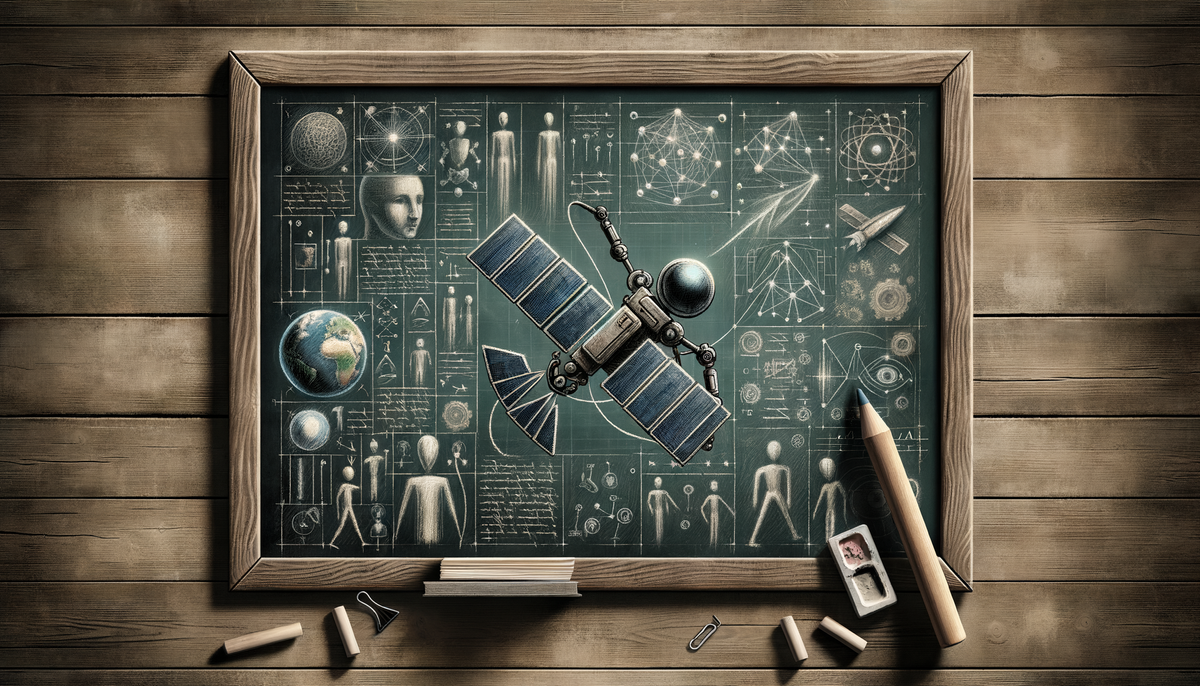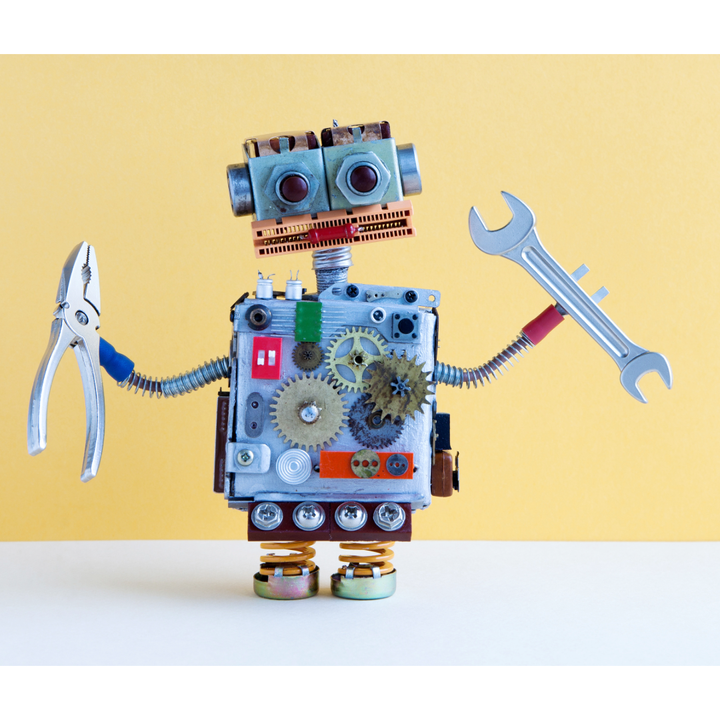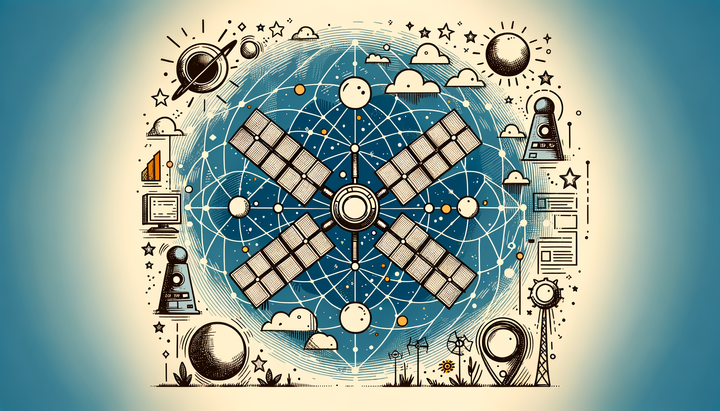AI Updates: The Rise of AI-Driven Creativity and Innovation

Artificial intelligence is reshaping creativity, industry, and how we interact with the digital realm, weaving together threads of innovation and controversy. From stirring up both joy and heartbreak by mimicking the enchanting style of Studio Ghibli to revolutionizing data centers with GPU optimization, AI’s many manifestations are prompting a critical reevaluation of technology’s role in art, enterprise, and everyday communication.
The Dichotomy of AI-Generated Creativity
The recent surge in AI-generated art has brought both fascination and trepidation into the limelight. Consider the ChatGPT-4o Studio Ghibli phenomenon. By drawing inspiration from beloved classics like “My Neighbor Totoro” and other masterpieces of Studio Ghibli, AI models are now capable of generating visuals and narratives that echo the whimsical charm and deep emotional resonance of these films. Yet, this clever imitation comes at a price: as one can observe, the distinct human touch—shaped by personal experiences, cultural insights, and a lifetime of creative endeavors—remains elusive to algorithmic fabrication.
For instance, while AI crafts narratives that superficially mimic Ghibli’s style, it operates on vast yet impersonal data sets. The output, though aesthetically pleasing, might lack the ineffable quality that only an artist’s soul can infuse. The debate in the creative community intensifies when comparing AI-driven art to human craftsmanship. On one side, enthusiasts laud AI’s ability to democratize creative expression—allowing anyone with access to these tools to recreate iconic styles. On the other, purists worry that such practices could lead to a dilution of artistic integrity, reducing masterpieces to mere algorithmic play.
“I believe AI is going to change the world more than anything in the history of mankind. More than electricity.”
— Kai-Fu Lee, AI Superpowers: China, Silicon Valley, and the New World Order
This dichotomy of technology-driven reproduction versus the authentic essence of human-created art encourages us to reflect on what art fundamentally represents. It’s not just the replication of form or style, but the conveyance of emotion and lived experience. As AI continues to evolve, its role in creative industries will likely remain a delicate balancing act between innovation and preservation.
For more insights into how AI influences innovative fields, you might explore our evolution of AI creativity article or read about its broader societal impacts in our piece on innovation and society.
Revolutionizing Enterprise Hardware: AMD and Rapt AI Collaboration
While the creative sector grapples with the meanings of authenticity and originality, another revolutionary trend is unfolding in the realm of enterprise technology. AMD’s strategic alliance with Rapt AI marks an important step in optimizing computational performance in data centers. By integrating Rapt AI’s advanced software with AMD’s Instinct GPUs—encompassing models like the MI300X, MI325X, and the upcoming MI350 series—businesses now face the possibility of unprecedented efficiency in AI model training and inference.
Resource allocation has long been a haunting concern for enterprise IT departments. Overprovisioning to meet unpredictable workload spikes not only leads to wasted resources but also drives up costs. With Rapt AI’s solution acting as an intelligent overseer, GPUs can be monitored meticulously, ensuring each unit’s power is used effectively. The collaboration provides a unified tool that tracks performance, balances workload distribution, and even extends its compatibility to competitors’ GPUs and cloud-based tensor processing units.
This strategic move not only plans to enhance performance but also encapsulates a broader trend of integrating AI with core hardware functionalities, paving the way for more adaptive and resilient data infrastructures. Such progress in hardware-software symbiosis can provide a real competitive edge in emerging markets, where optimizing operational expenditure is as critical as achieving breakthrough innovation.
This dynamic shift in enterprise AI brings to mind the earlier discussions on the AI revolution in creativity and employment, where technology continuously blurs the lines between manual labor and automated efficiency. Just like in creative industries, the balance between human oversight and technological augmentation will be a key concern as businesses harness these new tools.
Transformative Impacts on Data Management: Verdantis' Next-Gen AI Tools
Data is often referred to as the new oil, and efficiently managing it is paramount. Verdantis' launch of its advanced AI solutions, particularly focused on Master Data Management, heralds a significant breakthrough in taming the chaos of unstructured data. Tools like Auto-Enrich AI and Auto-Spec AI are designed to convert raw, siloed datasets into structured, intelligible formats crucial for operational consistency, especially in asset-intensive sectors such as Oil & Gas, Mining, and Food & Beverage Manufacturing.
Through sophisticated algorithms that analyze billions of data points, Auto-Spec AI extracts key information and standardizes it across systems. This not only enhances procurement processes but also imbues organizations with a greater degree of planning accuracy—a trait increasingly essential in today’s dynamic market. Meanwhile, Auto-Enrich AI sifts through public and proprietary databases to fill in missing information, thereby ensuring that existing ERP systems remain updated and accurate.
This leap in Master Data Management transforms how businesses view data, not merely as a byproduct of their operations but as a strategic asset that can drive smarter decision-making and improved operational efficiency. Companies that harness techniques like these may find themselves better equipped to extract actionable insights, thereby bolstering their competitive edge.
For detailed explorations of AI’s transformative role in industries, our website's content on Instacart's AI innovations and the future of creativity offers additional perspectives and case studies.
AI-Driven Web Development: The New Frontier
Another area where AI’s imprint is unmistakably growing is in the landscape of web development. The groundbreaking collaboration between Bolt.new and Netlify has reimagined the way we build and deploy online applications, achieving the remarkable milestone of powering one million AI-generated websites in just five months.
This combined approach of near-instant code generation and seamless hosting signifies much more than just a speed upgrade. Developers are now empowered to transition from idea to live application almost instantaneously, effectively bypassing traditional obstacles that involved complex infrastructures and elaborate DevOps procedures. For instance, entrepreneur Josh Wymer’s experience—where he built a fully functioning lead generation app within days—underscores the disruptive potential of this new technology.
"So how did he imagine we would have known anything about them?’ Her husband asked. Gloria smiled awkwardly. ‘They woke up this morning and have been chanting your name ever since."
— A.R. Merrydew, The Girl with the Porcelain Lips
The fusion of AI coding tools with robust hosting solutions like those offered by Netlify not only simplifies the development process but also redefines scalability. With enhanced functionalities, AI-driven platforms now support frequent updates, rapid prototyping, and a reduction in traditional operational overheads. This streamlined workflow demonstrates how innovation in web development can transform concepts into fully operational digital solutions in record time.
Such technological strides draw parallels with the transformative AI trends highlighted earlier on our site. If you're intrigued about how AI is merging into various innovative sectors, delve into our discussions on innovation and society, where we dissect the trends influencing industry-wide shifts.
Advancements in Everyday Communication: WhatsApp's Meta AI Rollout
One cannot overlook the profound changes AI is introducing into everyday communication tools. WhatsApp’s integration of Meta AI into its messaging platform across 41 European countries is a clear marker of this evolution. With a conspicuous AI button now made available just above the “New Chat” feature, users are immediately introduced to contemporaneous conversational AI.
The implemented AI is intended to enrich user interactions by offering functionalities such as extended responses, assistance with Bing-powered content, and even the creation of fun, custom stickers. However, it’s important to note that the current iteration remains relatively modest in capabilities; complex tasks like audio transcription or efficient handling of group chat summaries are still beyond its scope.
In a digital era where privacy and data security are paramount, Meta assures users that personal chat data will remain separate from AI training processes. Despite these assurances, the fact that users cannot opt out of using the AI feature raises valid questions about digital consent and the subtle encroachment of automation into personal domains.
This situation presents a microcosm of a broader trend: AI’s surreptitious integration into the very fabric of our daily lives. The transformation of a familiar messaging platform into an AI-enhanced tool is emblematic of how artificial intelligence is not only penetrating corporate data centers and creative industries but is also reshaping our habitual communication styles.
Confronting Ethical and Legal Challenges in AI
Amidst the exciting advances in AI technology come inevitable challenges that require scrutiny—particularly ethical and legal dimensions. A case in point is the recent settlement involving Cleo AI, which agreed to pay $17 million over allegations of deceiving consumers. While the specifics surrounding this case remain a topic of further debate, it is an unmistakable reminder that as AI becomes more ingrained in every aspect of our lives, the legal framework governing its use must keep pace.
Cases like this underscore the essential need for transparency, accountability, and robust ethical guidelines when deploying AI solutions. With the potential for such technology to inadvertently cross legal boundaries, companies and regulators alike are compelled to work in tandem to safeguard consumer interests while fostering continued innovation.
This type of legal oversight parallels the broader challenges discussed in the creative and enterprise sectors. Whether it’s ensuring that AI-generated artwork does not erode the sanctity of human creativity or that high-performance computational systems are used efficiently and ethically, the conversation surrounding AI’s evolution remains multifaceted and critical.
Reflecting on AI’s Multifaceted Impact
Throughout its many forms—from generating art that pays homage to the cinematic magic of Studio Ghibli to revolutionizing hardware performance and streamlining web development—the rise of artificial intelligence continues to reshape how we perceive creativity, efficiency, and even our day-to-day interactions. Even as traditional artists and technologists debate the boundaries of algorithmic reproduction, enterprise leaders and developers capitalize on the efficiency gains provided by AI-enabled platforms.
The inherent tension between machine precision and human sensibility is not a new story. Like the timeless struggle between tradition and innovation seen throughout history, the current landscape of AI development is redefining what it means to create, communicate, and operate in the digital age. In the words of Sundar Pichai, "AI is the most important thing humanity has ever worked on. I think it’s more profound than electricity or fire." These sentiments encapsulate the enormous promise and the equally significant responsibilities that come with wielding such transformative technology.
Striking a balance between leveraging AI to break through efficiency barriers and preserving the irreplaceable nuances of human emotion remains one of the defining challenges of our time. As discussions rage on—from debates on synthetic art to legal disputes and enterprise innovations—the common thread is a profound reexamination of our values in light of technological progress.
The way forward might be found in embracing a hybrid model: one that values technological acceleration while carefully safeguarding the human elements that define creativity, empathy, and ethical conduct. AI’s trajectory may be unpredictable, yet by understanding its multifaceted impacts, we can steer its development in directions that benefit society at large.
Further Readings
For additional perspectives on these technologies and their developing role in various sectors, consider exploring the following resources:
- The ChatGPT 4o Studio Ghibli AI Trend Is The Ultimate Heartbreak – Forbes
- The AI-Generated Studio Ghibli Trend, Explained – Forbes
- AMD teams up with Rapt AI to boost GPU performance for AI – TechTarget
- Verdantis Launches Next-Gen AI Solutions to Transform Enterprise Master Data Management – Yahoo Finance
- Bolt.new and Netlify Power 1 Million AI-Generated Websites – Yahoo Finance
- WhatsApp's Meta AI is now rolling out in Europe, and it can't be turned off – BleepingComputer
- Cleo AI to pay $17 million to settle US FTC charges – Reuters
Looking Ahead
As we stand on the precipice of a new AI era, it becomes clear that the conversation is not simply about the technology itself, but also about how it redefines our cultural and business landscapes. Whether through augmenting creativity in art, optimizing the capabilities of enterprise hardware, rewriting the rules of web development, or embedding itself into our daily chat experiences, AI remains a transformative force.
It is a reminder that with every innovation there is a need for a thoughtful examination of ethics, practicality, and the enduring value of what makes us human. One must appreciate not only the breakthroughs but also the rich tapestry of challenges that accompany this rapid evolution. In the words of Kai-Fu Lee, "I believe AI is going to change the world more than anything in the history of mankind. More than electricity." This statement encapsulates the potential and weight of what is to come—a future where progress is measured not just in speed or efficiency, but in its capacity to resonate with the human spirit.
By keeping a balanced perspective and an eye toward ethical applications, we can harness the power of AI to elevate industries, foster innovation, and enrich our cultural heritage, all while nurturing the unique blend of creativity that only human experiences can provide. The future is bright, albeit complex, and it beckons us to explore these new frontiers with both caution and unbridled enthusiasm.



Comments ()